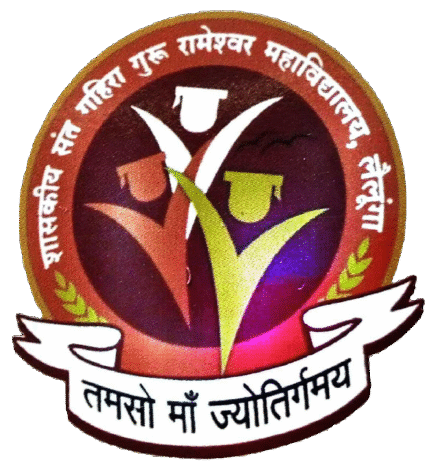HOD– Sukanti Singh
QUALIFICATION– M.Sc.,M.Phil.
DESIGNATION– Guest Lecturer
PROGRAMME OUTCOME U.G BOTANY
PO1:-Understand Students knowledge of plant Classification method .
PO2:- Students will be able to understand tell plant botanical nomenclature technique.
PO3:- Students will develop intrested to various pathogen plant disease symptoms to field study.
PO4:- Students Experiment Knowledge of practical concepts of Frequency , Density, Abundance Of Grassland.
PO5:- Students gain practical knowledge Of gram staining Bacteria with curd.
PO6:-Student understand the special various fungal disease plant sypmtoms Knowledge.
PO7:- Understanding the botany Knowledge Appliying the own life and work .
PO4:- student will be able to understand plant physiology various types practical knowledge
Determination of Experiment.
PROGRAMME SPECIFIC OUTCOME U.G BOTANY
PSO1:- Understanding the Nature and Basic concepts of all the plant groups thier metabolism
Components at the Molecular level,Biochemistry, taxonomy , ecology.
PSO2:- Hands on expertise in Biological sciences.
POS3:- Understand Botany knowledge it is essential for many career opportunities and job
Opportunities
COURSE OUTCOME U.G BOTANY
( Virus, Bacteria, Biotechnology,fungi, Algae, Lichen, Mycoplasma,Blue green algae,Mashroom,Bryophyta,pteridophya ,Gymnosperm,Paleobotany)
CO1:- On completion of the course students will be able to- Understand the diversity among
Virus thier multiplication as nd life cycle and economic Importance of virus.
CO2:- Students Understand the Bacteria Diversity and economic importance.
CO3:- The students will be able to understand Fungus classification and various type fungus
Disease and fungus symptoms.
CO4:- The students will be able to after this course is completed Recombinant DNA Technology tools steps Significance and use of Recombinant DNA Technology.
CO5:- Understand the students various type of algae and knowledge of
Students Home present algae structure.
CO6:- Understand the Lichen and Mashroom economic importance.
CO7:- The students understand riccia and marchantia bryophyte life cycle.
CO8:- The students understand pteridophytic member and knowledge some member used
Vegetable in daily life.
CO9:- Understand the students pinus cycas and ephreda life cycle and
Fossil Gymnosperm ,Fossil pteridophytic plant.
(PLANT TAXONOMY, ECONOMIC BOTANY,PLANT ANATOMY AND EMBRYOLOGY)
(ECOLOGY AND PLANT PHYSIOLOGY)
CO1:- Students Understand the Bentham &hooker classification, binomial nomenclature, IUCN,
Preservation of plant material and Herbarium technique.importance botanical garden.
CO2 :-On completion of the course students will be able to :-Understand various angiosperms
Families emphasing thier morphology distinctive features of biolo and know their
Economic importance.
CO3 :- On completion of the course students will be able to
Understand the role planls in human welfare.gain plant about various plant of economic
Know importance of plants & plant product & know the ultility of plant resources.
CO4:- On completion of the course students will be able to:-
:- Understand the scope & importance of anatomy . know various type of tissue system
and normal and anamalous secondary growth in plants.
:- understand structure and development of plant reproductive organs
&megasporogenesis µsporogenesis.know the process of fertilization and
embryology.
CO5:- On completion of the course, students will be able to:-
:- Understand scope of ecology, ecological adaptation in plants and plant communities.
:- Know concepts of ecosystem and biogeochemical cycle.
CO6:- On completion of the course , students will be able to :-
:- Understand the role plants cell in relation of water.
:- Understand the process of photosynthesis & respiration in higher plants.
:- Understand the learn about the moveo of sap and adsorption, translocation water and
Food.
:- Understand the plants hormones,& plants movement.
(ANALYTICAL TECHNOLOGY,PLANT PATHOLOGY,EXPERIMENTAL EMBRYOLOGY,ELEMENTARY BIOSTATISTICS, ENVIRONMENTAL POLLUTION ANDONSERVATION)
CO1:- Students will be able to understand after this course is completed
Chromatography,oven,incubater,autoclve,centrifuge,spectrophotometer technique.
CO2:- Understand the students cell wall ,plasma membrane, cytoplasm,ER, mitochondria,
Nucleus structure.and giant chromosome cell division,linkage, chromosomal aberration,
Mendals laws,gene interaction,gene concepts.
CO3:- Understand the students DNA-RNA structure, replication.and Mutation, genetic code.
and understand the mechanism of transcription & translocation in prokaryotes,gene
Regulation & expression by operon models.
CO4:-Understand the students tools of recombinant DNA Technology & gene cloning ,PCR
Application of biotechnology,G.M plants,DNA fingerprinting.
CO5:-Understand the students protein, carbohydrates,fats, general acount& enzyme
Nomenclature and & classification of various enzyme and thier activities.
CO6:- Students Understand the various type of plant tissue culture& microscope.
CO7:- understand the students general symptoms infection fungal,bacteral, virus various type of
Plant Disease.
CO8:-Understand the Students pollution ,green house gases,BOD,COD,& plant indicater
Concepts of biodiversity, national park & diversity hot spot, conservation strategies and
ICUN threat categories.
CO9:-Understand the students Elementary Biostatistics.
